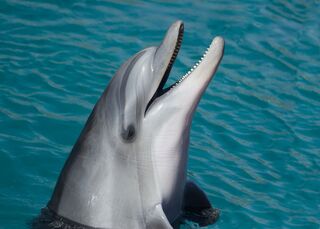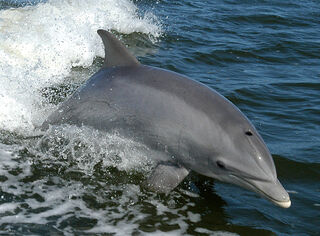Creativity
Measuring Creativity in Kids and Animals
Children and dolphins perform similarly on a new, non-verbal test of creativity.
Posted September 21, 2022 Reviewed by Davia Sills
Key points
- Researchers investigated creativity in preschool children and bottlenose dolphins using a non-verbal, cross-species methodology.
- Dolphins and children were trained to demonstrate a different, non-repeated action in response to a hand gesture.
- Both species performed similarly in terms of originality and fluency, though children’s actions were more energetic than dolphins.
- The study is proof-of-concept of a novel technique for understanding and quantifying creativity in young, non-verbal children and nonhumans.

When Deirdre Yeater, Ph.D., a psychologist at Sacred Heart University who studies cognitive development in marine mammals, set out to study creativity, she found she had a colleague with parallel research interests. Dawn Melzer, Ph.D., also a psychologist at Sacred Heart University, works on cognitive development in children. Both researchers were surprised to learn they used similar methodologies with their subjects, spurring them to collaborate on a cross-species investigation of creativity.
Creative Actions
Creativity is considered one aspect of intelligence. But there’s an issue with most current assessments of creativity: They rely on verbal methodologies, which leaves out anyone who is non-verbal, including very young children, children with developmental delays, and nonhuman animals.
In a study published in the journal Animal Behavior and Cognition, Yeater and Melzer tested a modified non-verbal creativity task in preschoolers and bottlenose dolphins. Participants were trained and assessed in their “natural habitats,” a preschool classroom or natural lagoon enclosure at the Roatan Institute for Marine Sciences. The researchers trained seven dolphins and 21 children over multiple sessions and positively reinforced them when they performed a new (i.e., non-repeated) behavior in response to a hand gesture.

It can take months or years to train a dolphin on this type of task, says Melzer. “For kids, we gave them a week during which we came in multiple times and taught them that this non-verbal cue indicates they should do a new behavior.”
For testing, each dolphin and child engaged in the task until they no longer exhibited a non-repeated behavior. Melzer and Yeater coded their behaviors for fluency (number of non-repeated behaviors demonstrated), originality, and flexibility (low, moderate, or high activity level).
They found that children and dolphins produced a similar number of non-repeated behaviors and also showed similar originality scores. When it came to flexibility, though, “there were differences in energy levels,” says Yeater. “We found lower flexibility levels for the dolphins; they were not exerting as much energy as the children.”
According to the researchers, this could be due to the incentives provided during training and testing. For producing a non-repeated behavior, dolphins were rewarded with fish—but Yeater says that “they knew they were going to get their normal diet at some point during the day.” Children, on the other hand, received stickers for following the command, which was highly motivating.
Hidden Abilities
Yeater and Melzer are both excited about future applications of this modified creativity assessment in children and animals.
“This study validates that you can use cross-species methodologies to look at similar behaviors,” says Yeater. “It’s valuable since it shows that we can use this assessment with multiple species.”

On the non-human side, Yeater has more experiments in the works with other marine mammals, such as pinnipeds (seals and sea lions) and orcas. She’s also interested in investigating the more complicated “tandem create” cue in dolphins, where two animals have to come up with a novel behavior to perform at the same time.
Melzer also sees valuable applications for this creativity assessment in children with developmental delays or under the age of 3.
“Standard IQ tests for children can miss information,” she says. “There are so many abilities that they overlook. This new assessment offers an opportunity to not only investigate creativity in nonhumans but to tap into the abilities of younger children or children who may have disabilities.
“This is something quantifiable that researchers and others can use with children to get them to show what they are capable of, creatively.”
References
Melzer, D. K., Yeater, D., Bradley, M., Hill, H. M., Guerra, G., Salazar, K., Bolton, T., & Dudzinski, K. M. (2022). A comparative test of creative thinking in preschool children and dolphins. Animal Behavior and Cognition, 9(3), 349-362. Doi: 10.26451/abc.09.03.07.2022.




